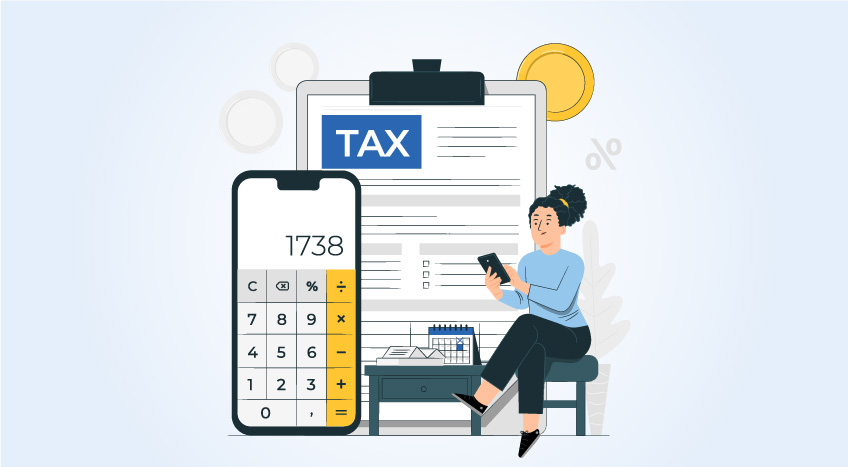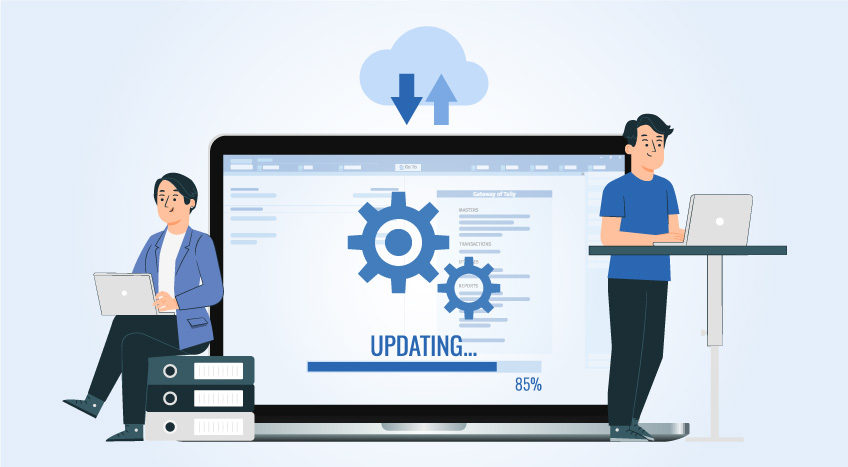Tally Solutions | Updated on: September 22, 2023
- e-Invoicing integration waves in Saudi
- Key requirements of the integration phase of e-invoicing
- How can TallyPrime help?
The first phase, called the 'Generation Phase' was successfully implemented on December 4th, 2021. During this phase, businesses had to use compliant business software to generate tax invoices, including simplified ones, and store them according to the phase requirements outlined in the regulations.
Starting from January 1st, 2023, the second phase, known as the 'Integration Phase,' is being rolled out by ZATCA (Zakat, Tax and Customs Authority). This phase involves integrating the business software, like accounting software and ERP, used by businesses with ZATCA's system for real-time reporting of invoice details.
In this new system, when a supplier generates an invoice, the details are electronically uploaded to the Fatoora portal. The portal then validates and authenticates the invoice.
After successful authentication, each invoice is digitally signed and added with a QR code. Also, each invoice will have a unique Invoice Reference Number (IRN). Only after the invoices are authenticated and signed by the Fatoora portal, the supplier can issue the invoice to the customer.
While the integration phase began on January 1st, 2023, it doesn't apply to all businesses right away. ZATCA understands the need for a smooth transition, so they are implementing the integration phase in different waves. Let's dive into the details.
e-Invoicing integration waves in Saudi
The first wave was applicable to businesses with annual taxable revenue exceeding 3 billion SAR in 2021. ZATCA has released a list of integration waves based on taxable revenue. The below table gives you a quick snapshot of different waves along with the date and business applicability.
|
e-invoicing Waves |
Business Applicability |
Integration Period |
|
Integration Wave -1 |
Businesses with annual taxable revenue above 3 billion SAR in 2021 |
1st Jan,2023 – 30th Jun, 2023 |
|
Integration Wave -2 |
Businesses with annual taxable revenue above 500 million SAR in 2021 |
1st Jul,2023 – 31th Dec, 2023 |
|
Integration Wave -3 |
Businesses with annual taxable revenue above 250 million SAR in 2021 or 2022 |
1st Oct,2023 – 31st Jan, 2024 |
|
Integration Wave -4 |
Businesses with annual taxable revenue above 150 million SAR in 2021 or 2022 |
1st Nov,2023 – 29th Feb, 2024 |
|
Integration Wave -5 |
Businesses with annual taxable revenue above 100 million SAR in 2021 or 2022 |
1st Dec,2023– 31st Mar, 2024 |
|
Integration Wave -6 |
Businesses with annual taxable revenue above 70 million SAR in 2021 or 2022 |
1st Jan 2024 – 30th Apr, 2024 |
These waves provide a clear roadmap for businesses, allowing them enough time to make the necessary changes and comply with the integration phase. The integration period denotes the start of the wave and the last date by which businesses, as applicable, need to generate e-invoices according to ZATCA's requirements.
As you can see in the table, ample time is allowed for businesses even after the integration period starts. Businesses have at least a minimum of 4 months to comply before the integration period ends.
Key requirements of the integration phase of e-invoicing
- Business software, like ERP or accounting software, must be integrated with ZATCA's system, known as the Fatoora Portal
- All B2B invoices must be recorded using compliant business software and electronically uploaded to the Fatoora Portal for real-time clearance
- Once the invoice details are successfully validated, the portal will clear the invoice by stamping it and adding a QR code.
- Simplified invoices also need to be reported to the Fatoora Portal for verification, but your business software will handle the stamping and QR code addition.
- simplified invoices can be reported within 24 hours of generating them.
How can TallyPrime help?
TallyPrime, a complete business management software is accredited by Zakat and Tax authority ZATCA as a compliant e-Invoicing (FATOORA) software. With the experience of 30+ years in the market, which has gained the trust of more than 2 million businesses worldwide, TallyPrime helps your business generate and manage e-invoicing with ease. It is designed to take care of every little detail to bring you the most delightful experience. TallyPrime fully supports phase -1 of e-invoicing and will be enhanced to support the phase 2 requirements.
Exciting times lie ahead for businesses in Saudi Arabia as the e-invoicing integration phase takes shape. So, get ready to embrace this new era of seamless, real-time e-invoice generation and compliance. TallyPrime has got your back!
Latest Blogs

Tackling Tax Compliance with TallyPrime

Withholding Tax in Saudi Arabia

What Is Small Business Relief under UAE Corporate Tax?

Understanding UAE Corporate Tax Law for Natural Person Business

How to prepare for UAE corporate tax filing?


